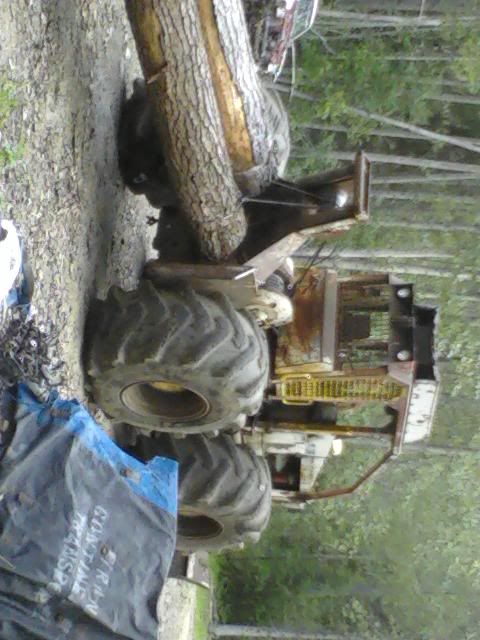Slamm, generally speaking when it comes to the mud I agree with you. There is that sweet spot where it'd be too wet to forward and not wet enough where as long as he's totally distributing his bunching activity, he'd never really be breaking through the duff with the dozer. They are used here so much because it is steep and there is far more road building to get to more timber, don't start me on whether this just means its really cable ground.... forwarders are intended to work bunched wood (from a processor, in traditional cases) which enables them to get more of a load each stop. A cable machine for bunching will be a natural progression anyhow, he can bunch and merchandise in any condition.
Yeah, I got locked into thinking about working these bottoms grounds. Those guys that I know that use the D4's and JD450's the bunch for the skidders that are running the ridge with the hitches out, but they can run those little dozers when it is completely soaked on the side hills for slow straight uphill pulling.
The thing I noticed is they can pull straight up and straight down those hills so well that, they can just back right up to every single log, I mean right up to it, on steep ground, and it just seemed to me that a grapple machine would be easily double the production, plus if you are cutting in wet conditions, its more likely that the log sinks and you can't get the choker under it, which I just hate. I'm not sure of Bitzer's board footage average, but if its not too big 200ish or so, I would sure look at a JD550 with some sort of grapple on it for bunching, once he gets to figuring out what size loads it can handle he can just buck the bigger logs to size, and pull up appropriate sized loads, instead of wasting time trying to get a choker under a muddy log and getting on and off the machine. Put lights on it and get it ready for working the short hour days, because a dozer, like a wide padded JD450 or 550 can go in any mud condition and most any slope and back right up to the log. It would be easier on the machine to grapple smaller logs or bucked up logs, than it would be to cable skid larger full length logs up the hill and have to drag them through everything, or at least I think so. A JD650 with a grapple would be the cats meow, I think, and they are pretty fast.
If I worked wet hills more, I would have an enclosed cab JD650 with a small swing grapple on it, that way when conditions are total crap, I don't have to get wet or muddy, and put lights on it, so I can work in any condition especially the short houred days, when there isn't anything else to do, but it just doesn't seem to me that I get into hills as much anymore which is great, so the flotation tire methods should work best for our pure mud conditions. I think Bitzer is working more hills than me, so the dozer with a cable arch or grapple would be pretty good for him. Make sure you get a wide track, they are night and day different on wet ground.
My opinion,
Sam













































